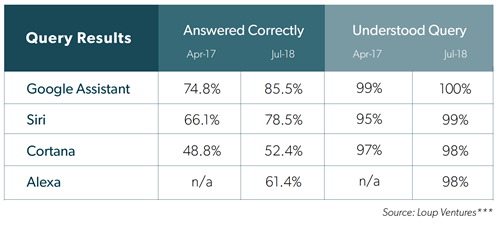Will AI Impact Marketing and Media Spend Optimization? (Spoiler: Yes!)
What’s happening?
Artificial intelligence is ranked as one of the most influential marketing terms for the last 2 years.* Is this huge spike in interest justified? Will AI offer a remarkably different path of progress in marketing, or is it in reality simply the application of faster processing to answer the same questions quicker and better?
First, let’s talk definition – what do we mean by AI?
“AI systems will typically demonstrate at least some of the following behaviors associated with human intelligence: planning, learning, reasoning, problem solving, knowledge representation, perception, motion, manipulation and, to a lesser extent, social intelligence and creativity.”**
It is clear that AI advancement will have an enormous effect on our day-to-day lives. It’s the advancement of AI that is enabling the reality of driverless cars. The cars onboard AI receives multiple real-time data streams from its cameras, radar and satellite connections as well as its onboard sensors to interpret all that data into driving decisions – it can’t rely only on linear programming to have detailed every potential combination of inputs, so AI must fill in to draw its own conclusions in the moment.
AI has resulted in the exponential growth of voice assistants, allowing for anticipation and interpretation of queries. Without AI we would still be stuck with Microsoft’s Clippy, the world’s worst digital assistant.

How is AI impacting marketing and media now, and what might we expect to change?
For several years Google, Facebook and Amazon have invested heavily into AI (Google’s head of search is the former AI lead). The Google AI system (RankBrain) interprets a search request and applies what it considers the most appropriate mix of Google’s various search algorithms to deliver customers what it thinks they really want, rather than specific responses to the search terms.
Facebook, despite recent controversy over their newsfeed algorithms delivering users the news they best respond to, are investing heavily in AI to interpret the enormous amount of text, pictures and video of user-uploaded content in order to understand and better engage their users.
Amazon’s AI investment has extended the impact of Alexa by expanding its skills from direct questioning to contextual conversation. Alexa (and Google Assistant) now interpret user questions in the context of previous queries, location, time, weather and many other factors to deliver more relevant answers.
AI is also beginning to have an increasing role in agency media planning. Historically, media optimization typically focused on a linear approach, considering each element of the mix one-by-one and allocating according to the best returns for each. Audience segments, strategic tasks, past performance and effectiveness of media channels are the main drivers. This processing solution starts new every time and applies ever-increasing computing power to force the best combination media mix result for a given KPI.
These approaches still work well for a national, ‘top-down’ campaign where we might consider all potential prospects in-market of roughly equal value, wherever they live.
At USIM, we have found that this ‘top-down’-only approach does not meet the needs of many of our location-based clients who are constantly battling any number of competing headwinds for customer awareness, equities and—most importantly—foot traffic through the doors resulting in sales.
Massively increasing complexity in media optimization is only going to get more complicated:
- Geo-targeting and behavioral segments in programmatic and direct buying across many media channels have become a critical component of today’s media targeting and buying
- DMPs and DSPs operating on client CRM data and custom lookalike audiences greatly increase targeting segments compared to past demographic targeting
- Real-time data and bidding requires a constant re-evaluation of the media mix
We believe the integration of AI technology into media-mix optimization will deliver systems that can anticipate requirements and shifts in market conditions and deliver optimizations that can respond to this more complex world.
USIM has partnered with Equals3, an AI development company that builds on the IBM Watson platform, to create the first in a new breed of AI-powered media mix optimization tools. ATOM™ is a tool that can account for all the potential factors that drive an optimization in a ‘bottom-up AND top-down’ approach at a zip code and behavioral segment level. What would have been impossible with a linear ‘top-down’ optimization is now achievable in real-time through the application of AI.
This new technology is allowing us to optimize simultaneously by zip code and DMA to exact store locations, targeting multiple segments and addressing multiple KPIs in a real-time and constantly evolving market. We believe that we will see a significant increase in the application of AI-powered optimization tools once we roll out ATOM™ in the market. We see these tools as the only way to harness the market’s ever-increasing complexity and to drive increased effectiveness in media planning and buying.
*https://www.kunocreative.com/blog/digital-marketing-terms-2018
**https://www.zdnet.com/article/what-is-ai-everything-you-need-to-know-about-artificial-intelligence
***https://loupventures.com/annual-digital-assistant-iq-test-siri-google-assistant-alexa-cortana
